Introduction
In the rapidly evolving landscape of information technology, configuration management tools have emerged as indispensable assets for organizations striving for operational excellence. These sophisticated software solutions empower IT teams to automate and streamline the management of system configurations across diverse environments, significantly reducing the risk of human error and enhancing overall system reliability.
As businesses increasingly embrace infrastructure as code practices, the role of configuration management tools has become even more critical. This article delves into the significance of these tools, explores the top options available in the market, and outlines the myriad benefits they provide, ultimately equipping organizations with the insights needed to navigate the complexities of modern IT infrastructure effectively.
Understanding Configuration Management Tools
Config management tools signify crucial software applications that enable IT teams to effectively oversee and uphold system setups across various environments. By automating the setup and maintenance processes, these config management tools ensure consistent configurations, significantly reducing the likelihood of human error. This automation not only enhances system reliability but also accelerates deployment cycles, facilitating a more agile IT infrastructure.
As entities increasingly embrace infrastructure as code practices, the significance of config management tools becomes essential for achieving operational excellence. According to a recent North America Configuration Management Market report, priced at USD 1500 and published on September 13, 2024, config management tools are essential resources for companies aiming to streamline IT processes and enhance efficiency. MarkWide Research states, 'MarkWide Research is a trusted partner that provides us with the market insights we need to make informed decisions.
Their reports are thorough, accurate, and delivered on time.' Furthermore, the impact of the COVID-19 pandemic on the config management tools market has highlighted significant trends and recovery strategies, which are crucial for organizations navigating today's technology landscape.
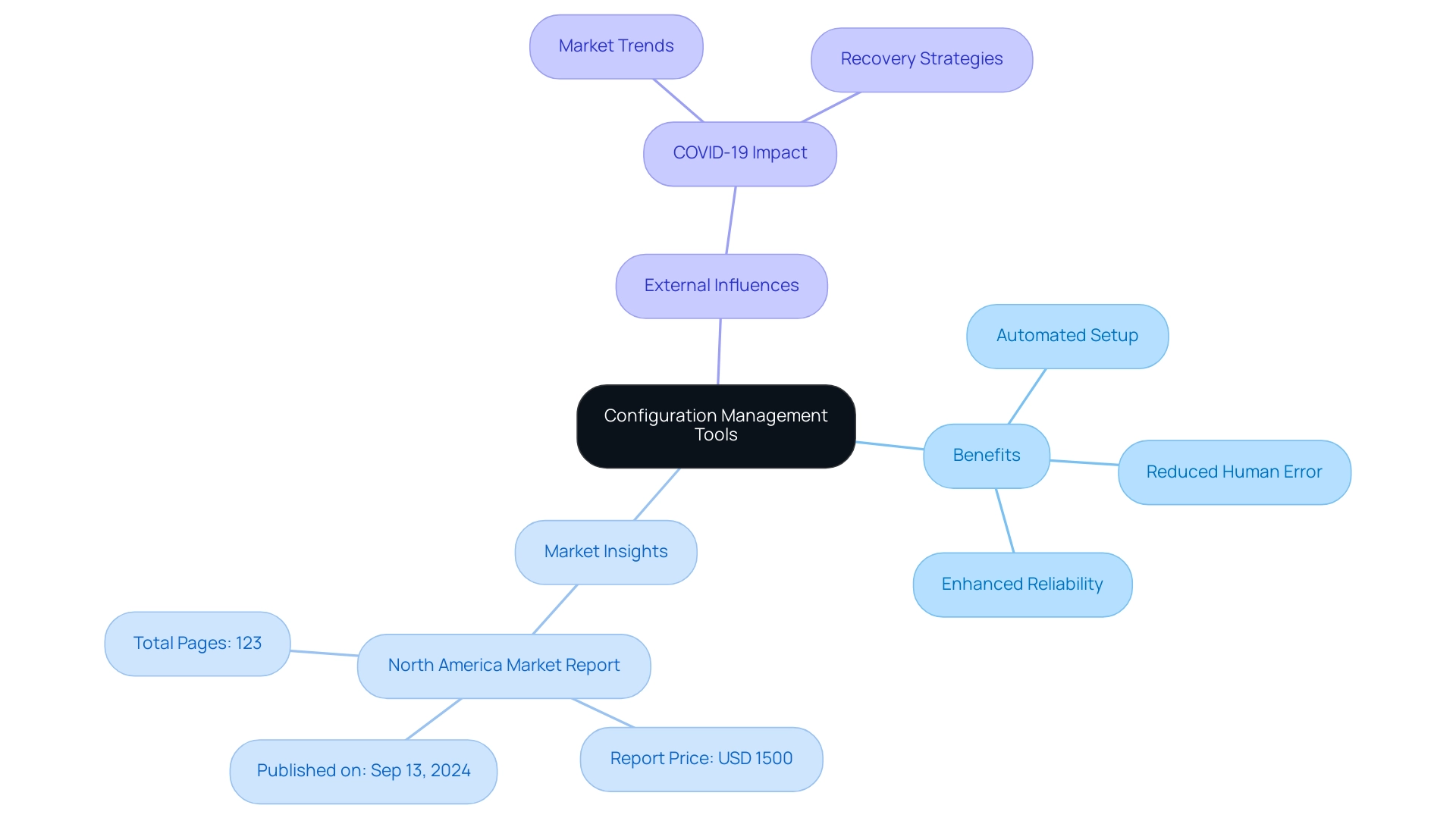
Top Configuration Management Tools to Consider
-
Ansible, as a leading open-source automation tool, streamlines IT orchestration and serves as one of the essential config management tools by employing a declarative language. Its agentless architecture utilizes SSH for communication, simplifying deployment and oversight. Recent trends indicate its growing popularity, particularly for entities seeking ease of use and rapid implementation, solidifying its position in the market. With the config management tools market projected to show a compound annual growth rate (CAGR) of 15% from 2024 to 2031, Ansible is well-positioned to capitalize on this growth.
-
Puppet: Famous for its extensive feature set, Puppet excels at automating the provisioning and arrangement of infrastructure. Utilizing a client-server architecture, it is particularly well-suited for large-scale deployments, enabling organizations to efficiently manage complex environments. Expert opinions emphasize Puppet's efficiency in large-scale environments, reinforcing its position as a leading competitor in the setup landscape. As noted by a representative from one of the largest companies in the defense industry, "Thank you for sending the market report and data. It looks quite comprehensive and the data is exactly what I was looking for. I appreciate the timeliness and responsiveness of you and your team."
-
Chef: This config management tools system utilizes code to automate infrastructure oversight. Chef's unique approach, through its recipes and cookbooks, provides flexibility for automation, accommodating the needs of intricate environments. In 2024, Chef continues to introduce innovative features that enhance its usability and effectiveness, catering to evolving industry demands. Technological advancements are expected to optimize product performance in the config management tools market, further enhancing the relevance of Chef in various sectors.
-
SaltStack: Created for rapid data gathering and automation, SaltStack distinguishes itself with its event-driven architecture, enabling real-time monitoring and oversight. This capability enables entities to react quickly to changes in their infrastructure, making SaltStack an essential resource for those focused on performance enhancement.
-
Terraform: Mainly acknowledged as an infrastructure as code solution, Terraform greatly aids in setup by allowing users to define and provision infrastructure through code. Its growing market share reflects the increasing adoption of infrastructure as code practices, underscoring its relevance in contemporary IT environments. As organizations increasingly depend on automation, Terraform’s role in setup oversight continues to grow.
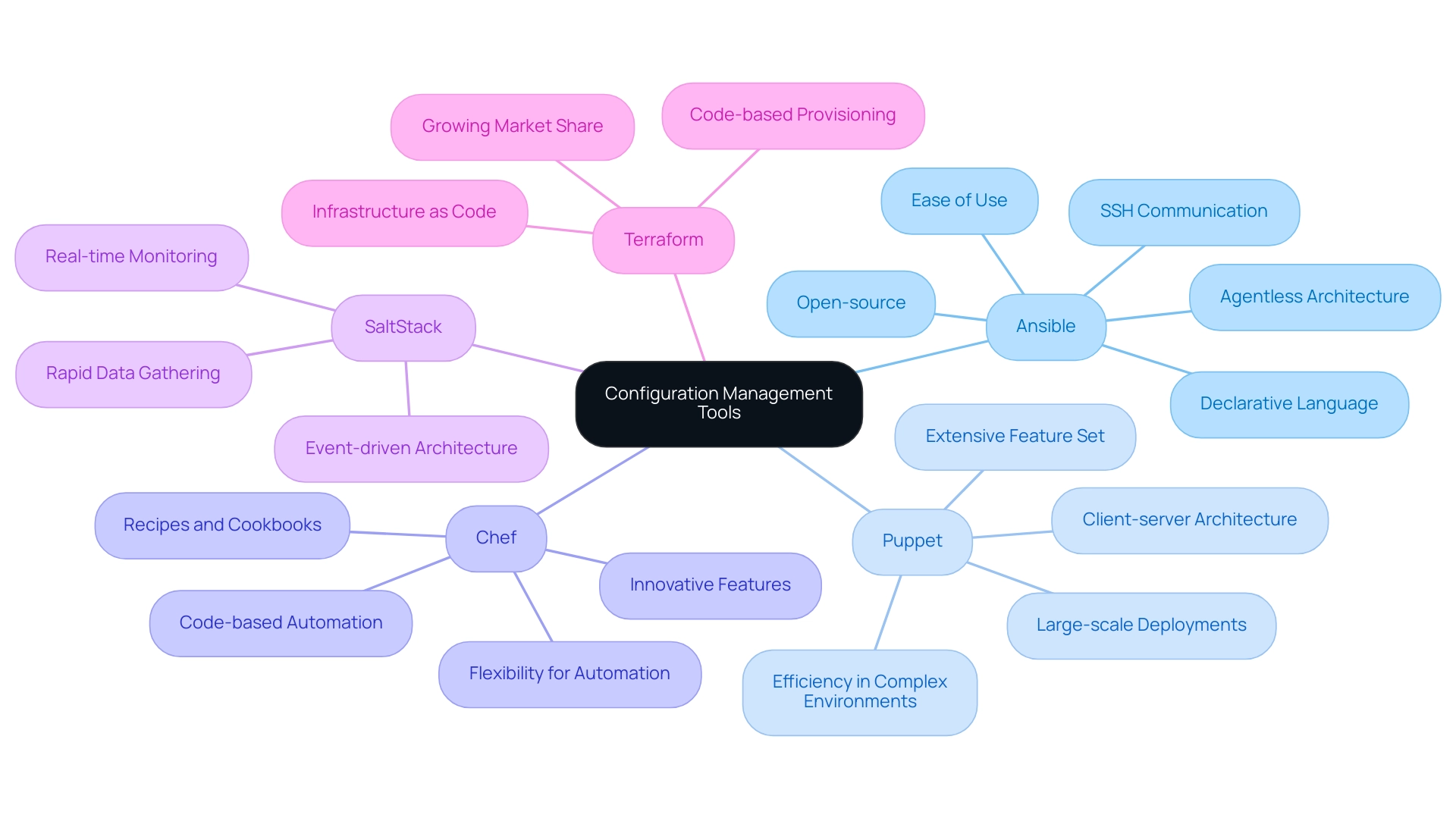
Specialized Tools for Specific Needs in Configuration Management
-
Jenkins: As a prominent CI/CD system, Jenkins is famous for its strong integration features with config management tools, which enable the automation of application deployment and testing processes. Recent developments, such as the
vm.waiting.Countgauge, offer insights into Jenkins performance by indicating the number of threads currently waiting for actions, improving resource allocation during CI/CD workflows. Additionally, thevm.gc.X.countstatistic shows the total number of times the garbage collector 'X' has run, further detailing Jenkins' performance metrics. Furthermore, the usage statistics feature in Jenkins tracks vital data, including version, agent information, and job counts, offering valuable insights into its operational efficiency. This feature has been demonstrated to help gather insights about Jenkins usage, as highlighted in the case study available at https://stats.jenkins.io/. As Pedro Bueno states, 'Jenkins offers an unmatched degree of control over the CI/CD process, making it an essential resource for any company.' -
Kubernetes: While primarily known for container orchestration, Kubernetes also has substantial management capabilities essential for overseeing containerized applications in microservices architectures. The integration of API keys allows for customizable permissions and CORS origins, streamlining access to essential metrics. This dual functionality positions Kubernetes as an essential resource for organizations leveraging microservices.
-
GitLab CI: This platform combines version control with CI/CD capabilities, allowing teams to handle application deployments and setups directly from their code repositories. GitLab CI's smooth integration with setup oversight resources boosts teamwork and productivity, making it a preferred option among development groups.
-
Octopus Deploy: Recognized for its deployment automation capabilities, Octopus Deploy thrives at handling intricate deployment workflows and integrates seamlessly with various config management tools. Its specialized capabilities empower entities to maintain consistency and reliability in their deployments, which is essential in today's dynamic development environments.
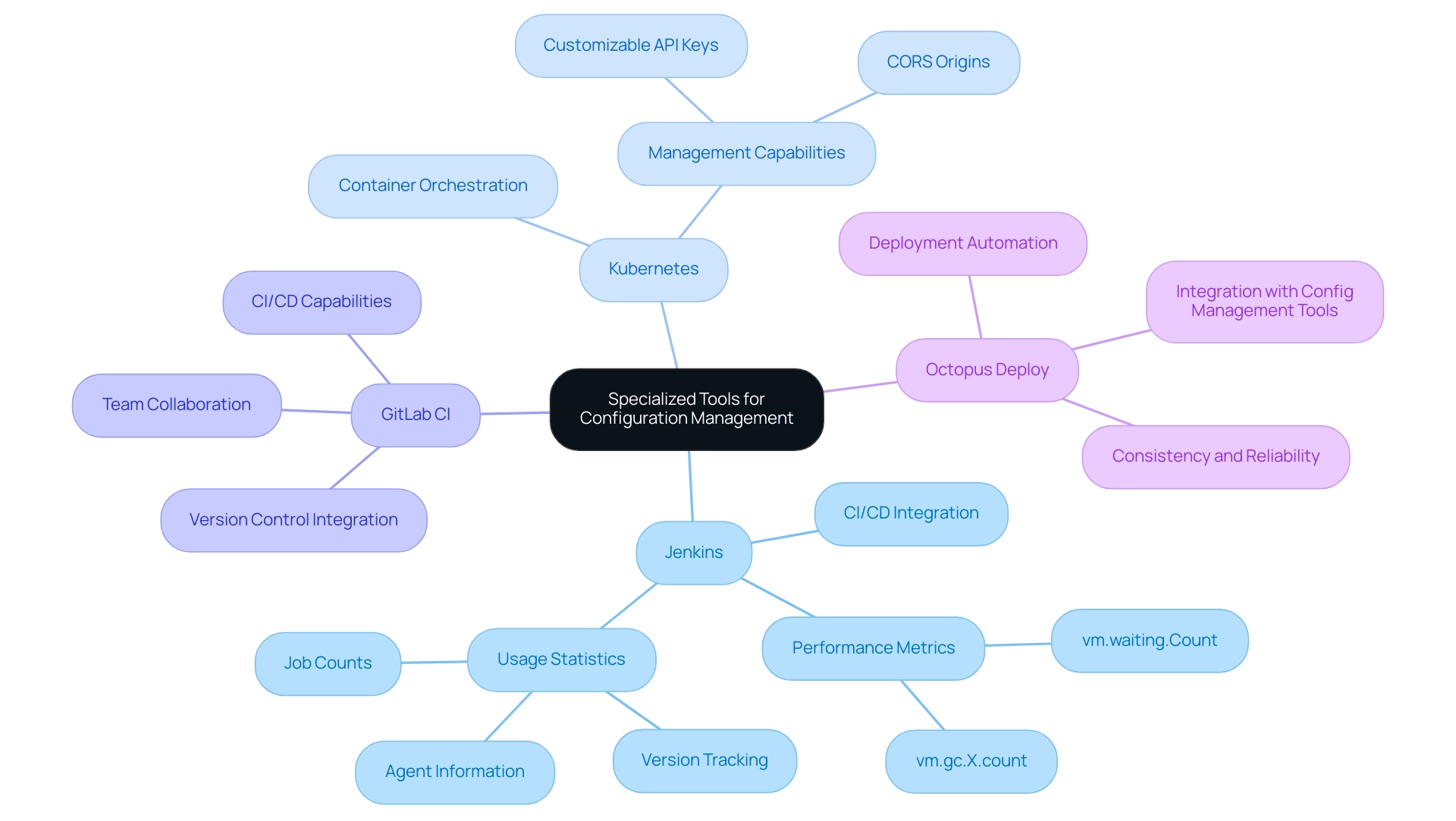
Benefits of Implementing Configuration Management Tools
-
Increased Efficiency: Automating setup tasks significantly reduces the manual effort required from IT teams. This shift allows personnel to redirect their focus toward strategic initiatives rather than being mired in repetitive operational tasks, leading to enhanced productivity and innovation within the entity. As stated in the Global Yellow Phosphorus Derivative Market Report, entities that adopt automation in setup oversight can experience efficiency improvements of up to 30% in their IT operations.
-
Consistency: Config management tools for setups play a critical role in ensuring system arrangements remain uniform across various environments. This consistency minimizes discrepancies, thereby reducing the likelihood of operational issues that can arise from variations in setup. As emphasized in expert views, ensuring consistency in IT environments results in a 25% decrease in incidents associated with setup errors.
-
Scalability: As companies grow, setup resources enable effortless expansion of infrastructure. They allow for prompt adjustments to be made in response to changing demands, addressing one of the major challenges highlighted in recent case studies where scalability often hinders operational performance, particularly in larger, rapidly growing companies. The case study titled 'Market Drivers and Challenges' illustrates how many management systems struggle with scalability across diverse infrastructures, and the use of config management tools can help alleviate potential performance issues and operational bottlenecks.
-
Enhanced Security: Maintaining a consistent configuration through these resources enables entities to better manage their security policies and compliance requirements. This proactive strategy significantly minimizes vulnerabilities, thereby strengthening the overall security stance of the entity. As noted in the quote regarding innovative CLM solutions, addressing product complexity and regulatory compliance is essential for maintaining security in today's fast-evolving IT landscape.
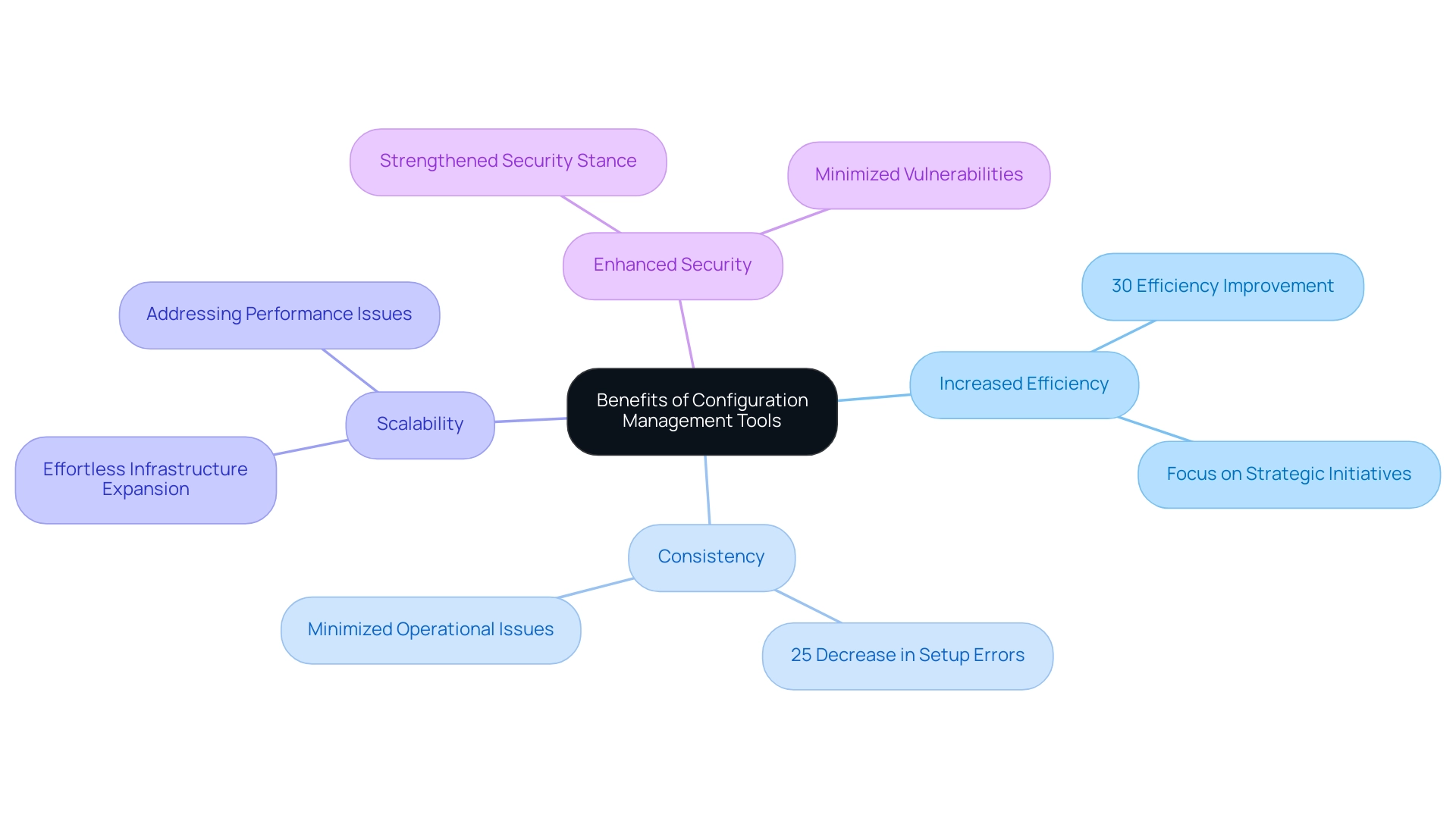
Choosing the Right Configuration Management Tool: Key Considerations
-
Assess Your Needs: Begin by identifying the specific requirements of your organization, such as scalability, ease of use, and integration capabilities with existing resources. Comprehending these factors is vital for ensuring that the configuration management system, along with config management tools, aligns with your operational goals and enhances overall performance.
-
Evaluate Vendor Support: The level of assistance and documentation provided by a vendor can greatly influence the implementation process. Prioritize resources that provide robust support options, as this can lead to smoother deployments and faster resolutions to any issues that may arise. For instance, platforms like Bitbucket are renowned for their collaborative features, which are essential for effective software team interactions and problem management.
-
Cost Considerations: Conduct a thorough analysis of the total cost of ownership, which encompasses licensing fees, training expenses, and potential hidden costs that may surface during implementation. This financial assessment is vital for ensuring that the selected resource provides a solid return on investment while meeting your organization's needs.
-
Community and Ecosystem: Choose resources that boast strong community support and a vibrant ecosystem. A well-established community can provide valuable resources, integrations, and shared insights that improve the functionality of the system. For example, CFEngine's automation capabilities not only simplify the installation and setup of IT system software but also provide customizable dashboards and compliance reports, thus facilitating best practices in DevSecOps workflows.
Furthermore, Carfax employed Chef to decrease the duration needed to accomplish a new server build task from days to minutes, showcasing the efficiency improvements achievable with setup resources.
Furthermore, as Terraform states, 'Terraform isn’t a configuration management resource in the traditional sense.' However, I’ve found it can be a very strong one for enterprise applications due to its IAC functions. This highlights the versatility of config management tools in contemporary IT environments.
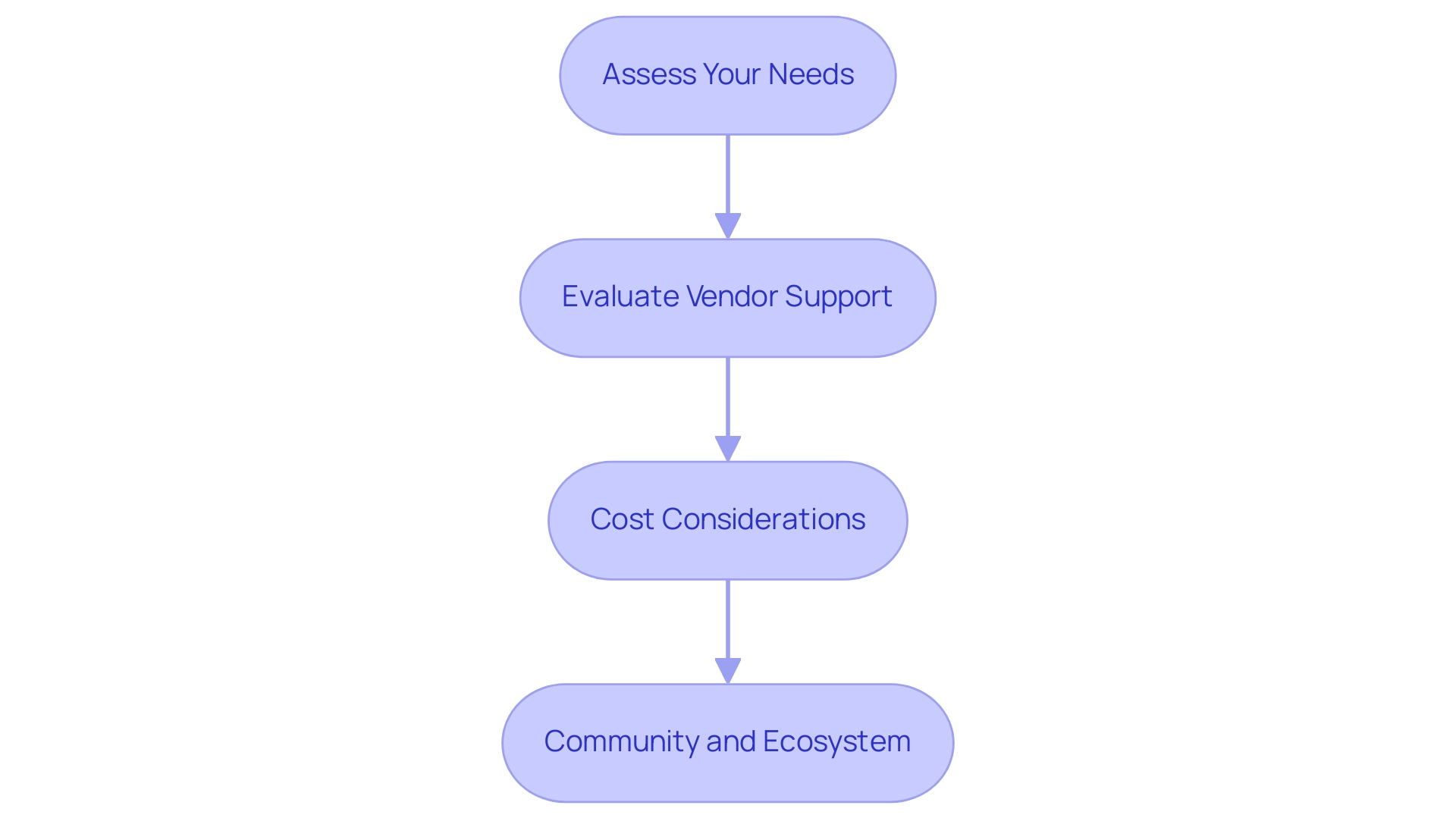
Conclusion
The significance of configuration management tools in today's IT landscape cannot be overstated. As organizations strive for operational excellence, these tools serve as critical enablers of efficiency, consistency, scalability, and security. By automating and streamlining the management of system configurations, IT teams can minimize human error and enhance system reliability, paving the way for a more agile and responsive infrastructure.
The exploration of various configuration management tools, such as Ansible, Puppet, Chef, SaltStack, and Terraform, highlights the diverse capabilities available to organizations. Each tool offers unique features tailored to specific needs, reinforcing the importance of selecting the right solution based on individual organizational requirements. Furthermore, specialized tools such as Jenkins and Kubernetes illustrate how configuration management can integrate seamlessly with other IT practices, enhancing overall operational effectiveness.
Ultimately, the adoption of configuration management tools not only leads to increased efficiency and reduced operational risks but also supports the broader trend of infrastructure as code. As organizations navigate the complexities of modern IT environments, implementing these tools will be pivotal in achieving strategic goals and maintaining a competitive edge. Embracing configuration management is not just a technical decision; it is a strategic imperative for organizations aiming to thrive in an ever-evolving digital landscape.




